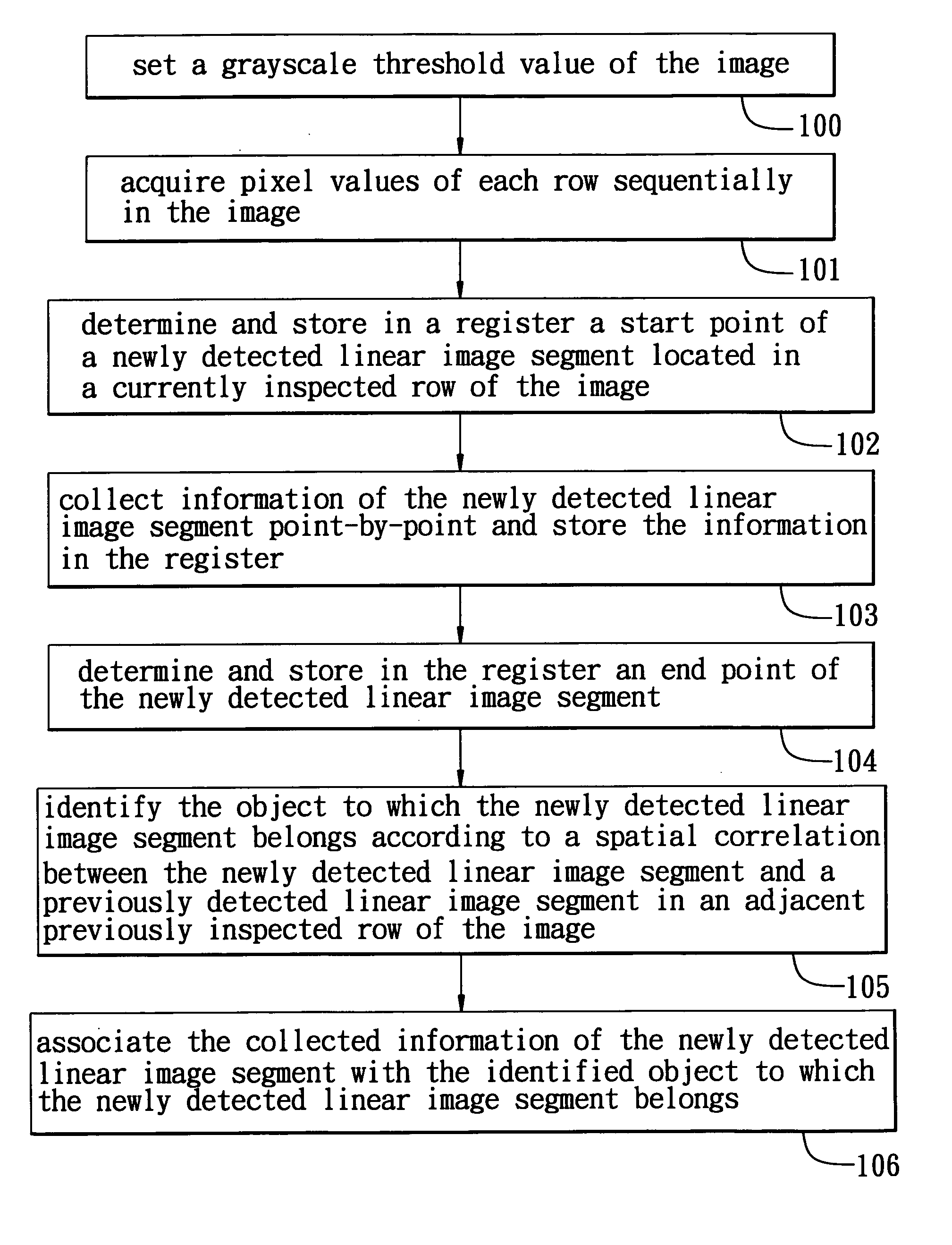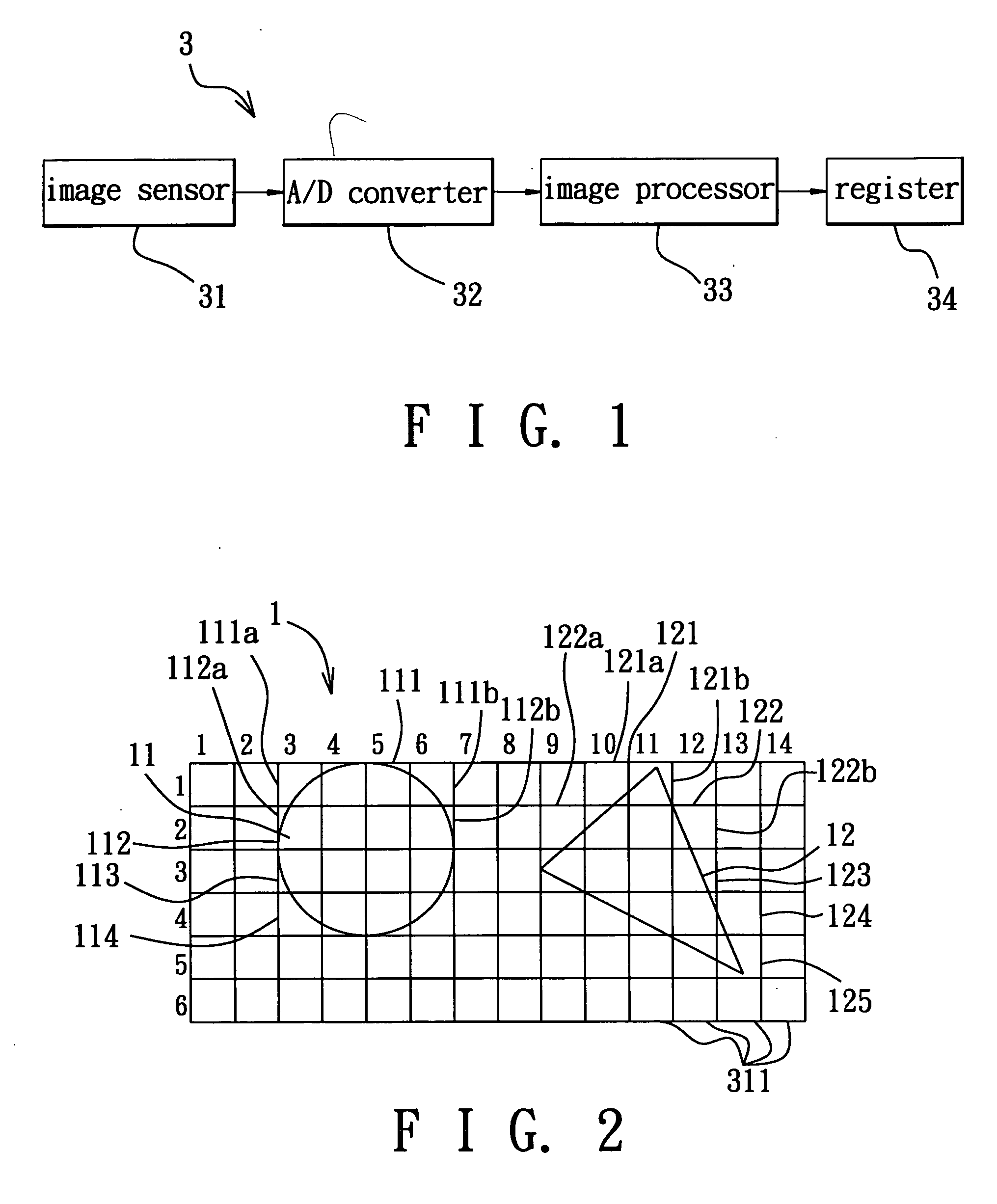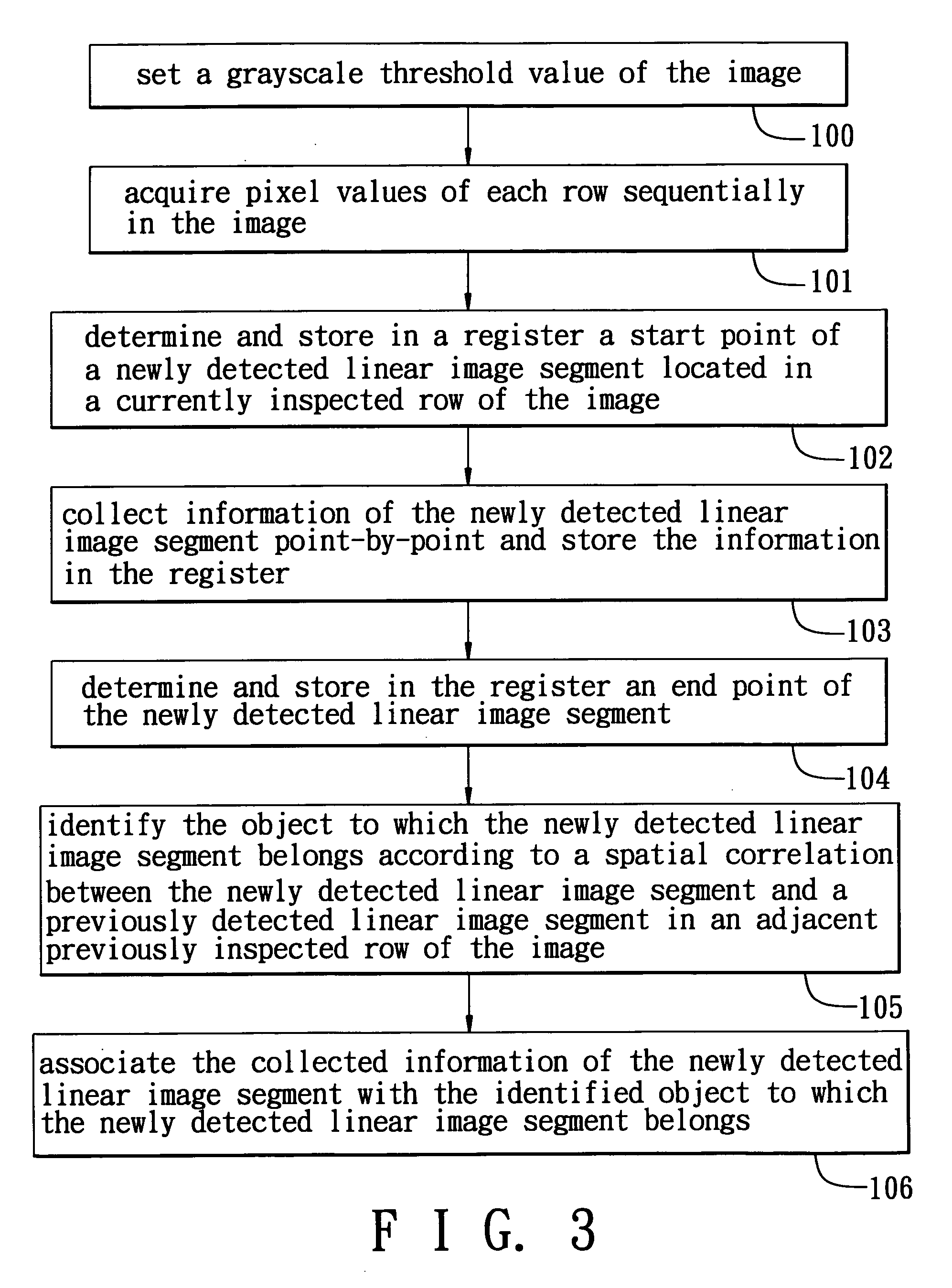Method for recognizing objects in an image without recording the image in its entirety
a technology of object recognition and image, applied in the field of image recognition methods, can solve the problems of increasing the number of objects to be recognized in images, consuming a large amount of time, and consuming a large amount of memory resources of image buffers, so as to achieve the effect of saving memory resources
- Summary
- Abstract
- Description
- Claims
- Application Information
AI Technical Summary
Benefits of technology
Problems solved by technology
Method used
Image
Examples
Embodiment Construction
[0013] Referring to FIG. 1, the preferred embodiment of a method for recognizing objects in an image according to the present invention is implemented using an image processing system 3. The image processing system 3 includes an image sensor 31, an analog-to-digital converter (A / D converter) 32, an image processor 33, and a register 34. The image sensor 31 may be a CCD or CMOS sensor, and is used to generate an analog output corresponding to light rays from a captured object (not shown). The analog output is provided to the A / D converter 32 for conversion to a digital signal. The image processor 33 is responsible for signal processing and computations.
[0014] It is noted that the image processing system 3 in this embodiment can be used in an image capturing device, such as a video camera, to provide the same with an image recognition function. In other embodiments, the image processing system 3 may be implemented as recognition software installed in a computer. In addition, since th...
PUM
 Login to View More
Login to View More Abstract
Description
Claims
Application Information
 Login to View More
Login to View More - R&D
- Intellectual Property
- Life Sciences
- Materials
- Tech Scout
- Unparalleled Data Quality
- Higher Quality Content
- 60% Fewer Hallucinations
Browse by: Latest US Patents, China's latest patents, Technical Efficacy Thesaurus, Application Domain, Technology Topic, Popular Technical Reports.
© 2025 PatSnap. All rights reserved.Legal|Privacy policy|Modern Slavery Act Transparency Statement|Sitemap|About US| Contact US: help@patsnap.com



